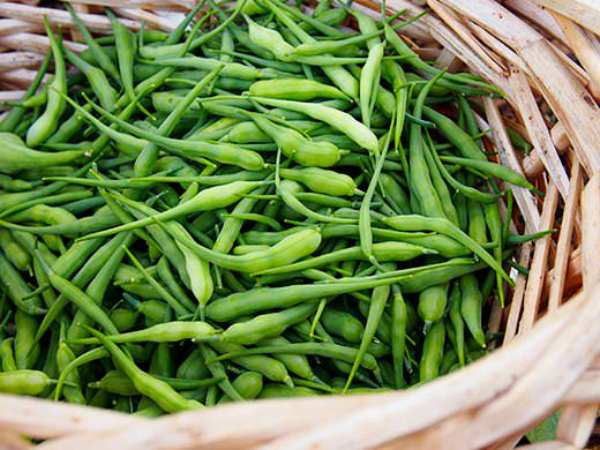How to pick radishes correctly
Content
Features of harvesting radish
Growing and harvesting crispy radishes does not cause much trouble, of course, if you did not set out on an industrial scale of several hectares, but limited yourself to planting a vegetable on an area of several square meters. m. But even if your root crop plantation has an impressive size of 1 or more hectares, there will be no additional difficulties in care, and the process will simply take longer. It is possible to facilitate the care of large-scale plantings on several hectares if you purchase special agricultural equipment, for example, a radish harvester.
In order for the beds with your favorite vegetable to give a maximum of root crops, the harvest is harvested in several stages, with an interval of several days. As a rule, early varieties ripen faster, therefore, they can be harvested first, when plants of other varieties are still actively growing. If the roots of early varieties are left in the soil for at least a few days longer than the prescribed period, they will deteriorate very quickly. Late varieties of radish require a longer period for full ripening, however, it has better transport and storage properties. Winter radishes can be successfully preserved in the soil even during the winter, however, for this they need to be covered with a protective layer of mulch (for example, straw).
As a rule, early radish varieties bear fruit within 30 days after sowing, winter varieties are ready for harvesting in 60 days. But regardless of the variety and ripening period, it is very important not to miss the moment when you can harvest. If you do not do this on time, then the roots will become flabby and lethargic, and also acquire a bitter taste.
Collecting root vegetables
When harvesting root crops, great attention should be paid to their size: mature radishes should be larger than 2.5 cm in diameter.
There are several rules for when and how you can pick your favorite root vegetable:
- Before yanking the plant out of the ground, scoop some dirt off the top of the plant to determine the size of the root crop. All plants with a diameter of 2.5 cm or more can be harvested. If the root crop of the selected plant is still small, it must be sprinkled with soil to allow it to ripen.
- Since spring varieties require a shorter ripening period, they should be checked as often as possible so as not to miss the right moment.
- If you harvest your radishes in the fall, plan your actions so that you have time to harvest before the first frosts come.
The radishes are removed simply by pulling on the tops. If we are talking about industrial cultivation on an area of several hectares, then farmers use a radish harvester - an excellent assistant, capable not only of efficiently collecting root crops, but also effectively cleaning them from tops. Such a harvester is simply irreplaceable if the task is to collect radishes from huge areas of tens of hectares, while planting on several square meters.m can be easily processed by hand.
So, if, after all, such a luxury as a combine is not yet available to you, then we collect your favorite vegetable by ordinary pulling it out of the ground.
If the growing conditions were respected, and the plantings were properly thinned out, then you can easily pull out only the desired plant without harming the neighboring root crops.
Immediately after harvesting, the tops must be cut from each root crop. Sometimes green mass is used for cooking. A modern food processor is able to prepare a delicious salad from it in a matter of seconds. But if such dishes are not for you, just throw it away.
The harvested radishes are stored in a refrigerator (or special refrigerating chambers, if the crop was harvested from several hectares).
Seed collection
In order to get seeds, some of the plants will have to be left in the ground. It should be remembered that the roots of such plants will not be edible.
After the main plantings of the radish are harvested, the plants intended to donate seeds continue to be tended as usual. A few days will pass, and pods will appear on them, in which seeds are formed: at first, each plant knocks out a stem, on which nondescript flowers appear, and they, in turn, quickly turn into pods.
When the pods begin to dry out and turn yellow, they can be harvested. Sometimes such pods with seeds are eaten - they are great for vegetable vitamin salads. If your goal is seed, then the seeds need to be dried. Radish seeds, ready for storage, are brown in color and stored in a hermetically sealed container.
As a rule, to get seed, which is enough for several square meters. m, a dozen or so plants are enough. In turn, in order to sow more than 1 hectare, several square meters can be left for seeds. m of plants.
The rules for harvesting both the radish harvest and its seeds are the same for all scales: when you have to manage a huge plantation of ten hectares, and if your garden occupies only a few square meters. m. Observe the simple conditions of care and storage, and, possibly, the crop harvested by you from 1 sq. m. m of beds will be better than many get from a hectare. Maybe the days when you also need a radish harvester are not far away? After all, the main thing in gardening is not the number of square meters. m of soil, but how to care for them.
Video "How to Harvest Radish Seeds"
This video demonstrates how to harvest a radish if you left it for seed.





